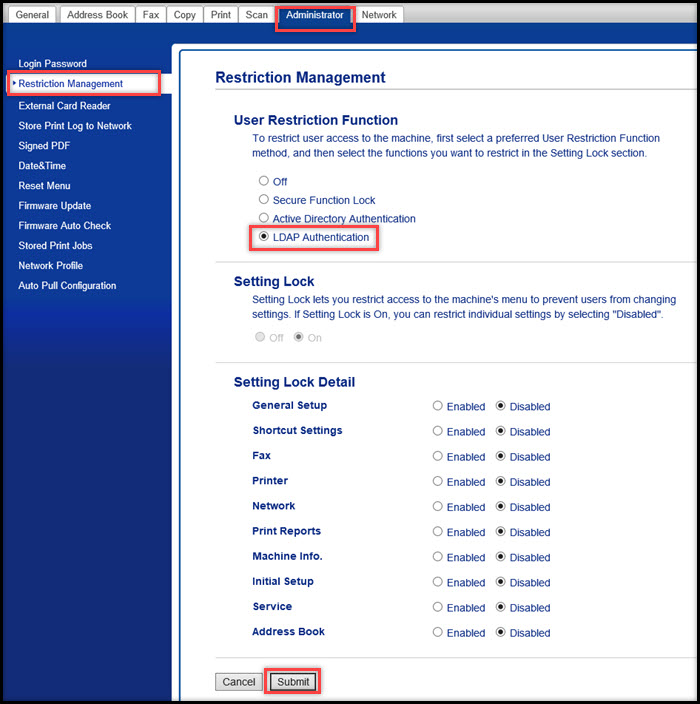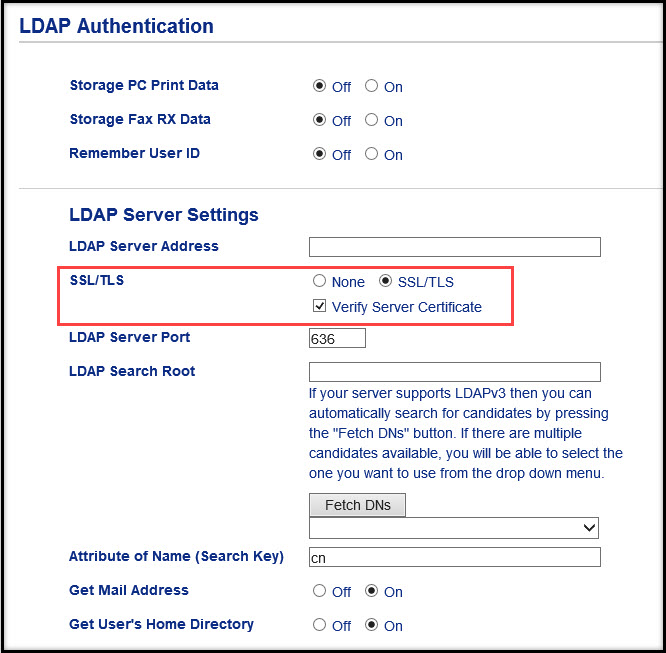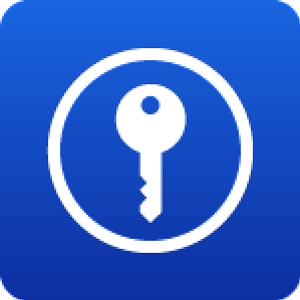- Brother support website
- Brother Support for IT Administrators
- I want to use SSL/TLS to encrypt communication between my Brother device and an LDAP or Active Directory server.
I want to use SSL/TLS to encrypt communication between my Brother device and an LDAP or Active Directory server.
Use LDAPS Authentication to encrypt communication between your device and an LDAP or Active Directory server. Encryption helps prevent privacy violations, information leakage, and account hijacking.
To configure LDAPS Authentication, use the device's Web Based Management page.
NOTE:
To use SSL/TLS communication, install the Root Certificate from the CA on your computer.
-
Encrypt communication between the device and the address book stored in the LDAP server
-
Encrypt communication between the device and the Active Directory server
-
Encrypt communication between the device and the LDAP server
Encrypt communication between the device and the address book stored in the LDAP server
-
Start your web browser and make sure the device is powered on.
-
Type "https://device's IP address" in your browser's address bar, for example: https://192.168.1.2.
-
In the Login field, type the password, and then click
 .
. -
The default login password to manage device settings is one of the following:
- initpass
- the password located on the back or bottom of the device and marked "Pwd". -
If you previously changed the password, type the updated password.
-
Depending on the device you are using, you may not have to enter a password.
HINT:
-
Click the Address Book tab, and then click LDAP.
-
Select the LDAP Search radio button, and then configure the LDAP settings.
To enable LDAPS, make sure you select both the SSL/TLS radio button and the Verify Server Certificate check box. -
The default port number for SSL/TLS is 636.
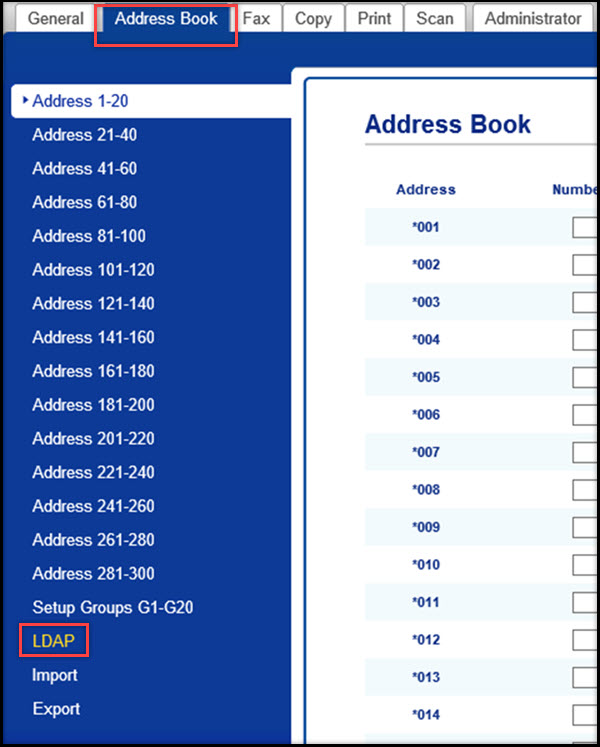
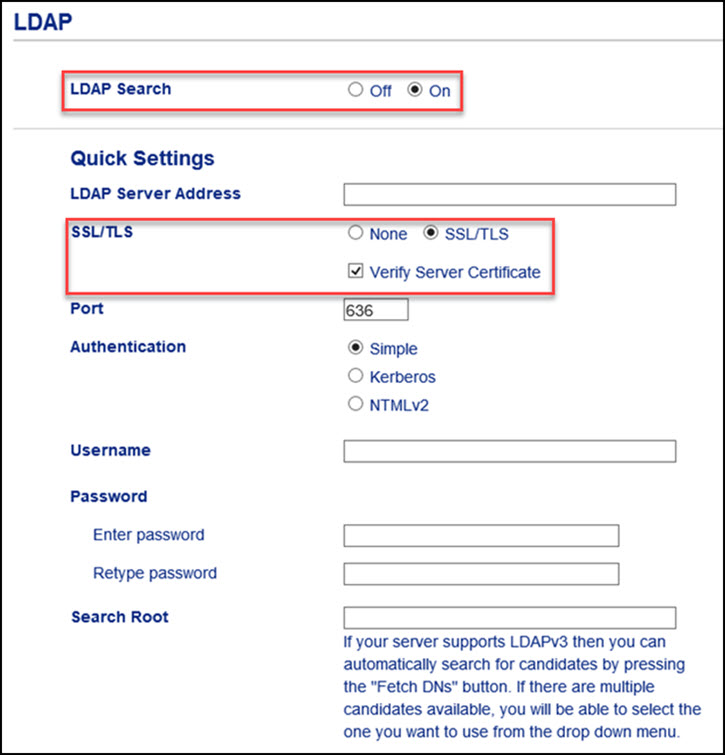
HINT:
-
Click Submit.
-
When finished, log out of Web Based Management and close your browser.
Encrypt communication between the device and the Active Directory server
-
Start your web browser and make sure the device is powered on.
-
Type "https://device's IP address" in your browser's address bar, for example: https://192.168.1.2.
-
In the Login field, type the password, and then click
 .
. -
The default login password to manage device settings is one of the following:
- initpass
- the password located on the back or bottom of the device and marked "Pwd". -
If you previously changed the password, type the updated password.
-
Depending on the device you are using, you may not have to enter a password.
-
Click the Administrator tab, and then click Restriction Management in the left navigation bar.
Select Active Directory Authentication, and then click Submit. -
Click Active Directory Authentication in the left navigation bar, and then configure the settings based on your network environment.
Select the SSL/TLS radio button, and then select the Verify Server Certificate check box. -
To enable LDAPS, select your preferred network authentication method:
Click the Protocol & Authentication Method drop‑down list and select either [LDAP + kerberos] or[LDAP + NTLMv2] . -
The default port number for SSL/TLS is 636.
-
Click Submit.
-
When finished, log out of Web Based Management and close your browser.
-
Start your web browser and make sure the device is powered on.
-
Type "https://device's IP address" in your browser's address bar, for example: https://192.168.1.2.
-
In the Login field, type the password, and then click
 .
. -
The default login password to manage device settings is one of the following:
- initpass
- the password located on the back or bottom of the device and marked "Pwd". -
If you previously changed the password, type the updated password.
-
Depending on the device you are using, you may not have to enter a password.
-
Click Administrator tab, and click Restriction Management in the left navigation bar.
Select LDAP Authentication, and then click Submit. -
Click the LDAP Authentication in the left navigation bar, and then configure the settings based on your network environment.
Select the SSL/TLS radio button, and then select the Verify Server Certificate check box. -
The default port number for SSL/TLS is 636.
-
Click Submit.
-
When finished, log out of Web Based Management and close your browser.
HINT:
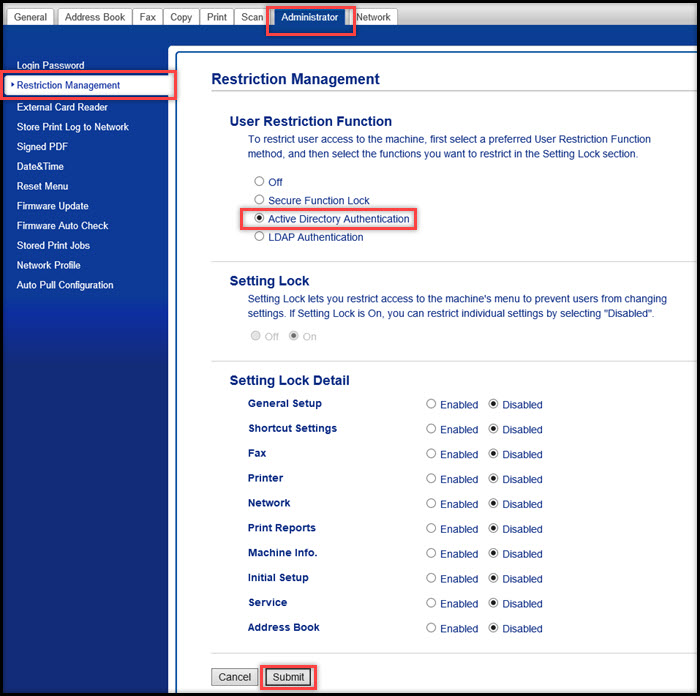
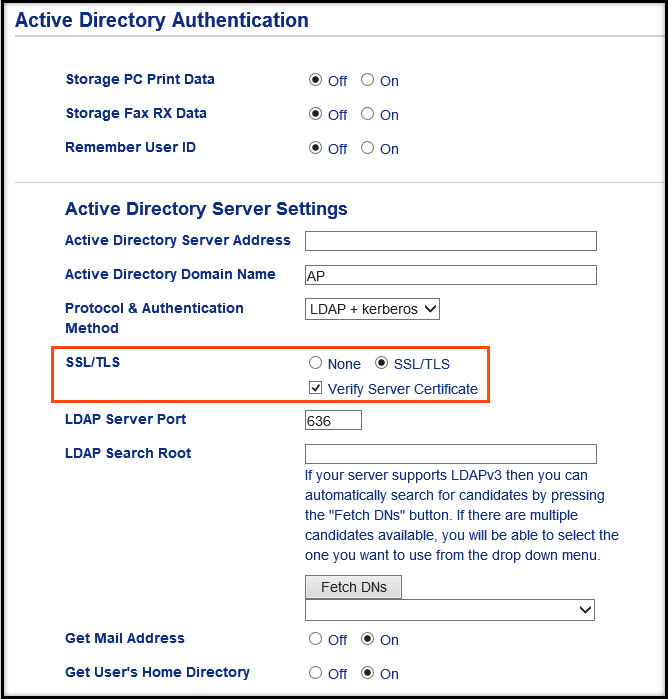
HINT:

Encrypt communication between the device and the LDAP server
HINT:
